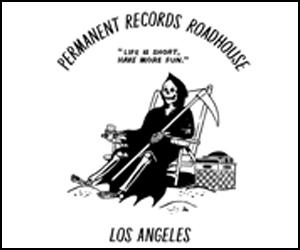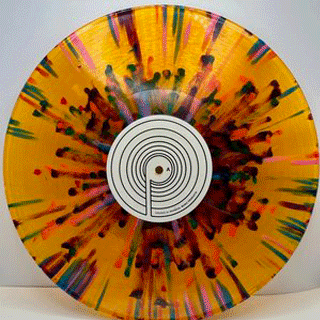Album premiere: Coma Culture chats about ‘Camouflage,’ coping mechanisms and ‘an optimistic, deep blue haze’
Kevin Bronson on
0

“So we throw our phones / Onto airplane mode / And we eat some ’shrooms / While we take off all our clothes,” Eric Cannata sings on the Coma Culture single “In Love,” a euphoric peak on the SoCal trio’s debut album, “Camouflage.”
It’s a record about highs and lows and the things we do to hide (and hide from) the latter, couched in soaring dream-folk. It was years in the making, the project starting from the friendship kindled by Cannata and Francois Comtois, both of whom are members of Young the Giant, and Jon O’Brien, the songwriter-producer who was YTG’s tour manager.
The trio had worked together on other projects as well, but as Coma Culture they engage in a rare band democracy: The album has songs written and sung by all three musicians, each of whom play various instruments throughout. “Camouflage” is somehow a cohesive work, though, its overall buoyancy polished meticulously during the pandemic and its vitality and spirit arriving at a time lockdown has loosened its grip and returned us to … well, what? The same ol’? Something modestly improved? A being we dreamed about all those nights on the couch?
Leading off with the song that gave the band its name, “Coma Culture,” the album talks about such things.
Color “Camouflage,” streaming here the day before its official release, hopeful. We caught up with O’Brien for a quick chat about the trio’s debut, appearing beneath the stream.
Buzz Bands LA: History is sprinkled with bands named after one of their own songs … or is it, songs that were name for their own band? In your case, which came first — Coma Culture the song, or Coma Culture the band name?
Jon O’Brien: The song “Coma Culture” came first in this case. Francois wrote it and as we were looking for a band name, we realized that Coma Culture was the exact thing we were all writing about getting away from. How do we break out of our day-to-day, mindlessly unhealthy habits, and find peace, love and a more realized form of our ourselves? The song “Coma Culture” seems to present the problem, and the rest of the album is attempting to find a solution, ending in “100 Years,” an ode to staying present.
Your friendship started with Young Giant, bonding over music and a shared love of certain great bands like Broken Social Scene, Sparklehorse, Slowdive and the Cure. Are there any great indie bands that you guys thoroughly DISAGREE about?
Jon O’Brien: That’s a tough one! Nothing comes to mind.
The project started before the pandemic, but a lot of crucial work on the album was done during the lockdown. Was it difficult for you three to keep your chins up during the process? What were your coping mechanisms?
Jon O’Brien: The album was truly a blessing during the pandemic. I needed the camaraderie and a project to focus my attention on. We were constantly Facetiming, talking about the record, joking around, excited for the future of our new band. The pandemic allowed me to mix the album from home, with my kids crawling over me, sticking Easter eggs in the woofer of my speakers, with the air conditioner on full blast three feet away from my desk, and Blippi playing on the television. It was far from an ideal listening environment, but the drive to make something beautiful and brave in such a scary time made it all come together. I was later able to put the finishing touches on it in my studio before shipping it off to mastering. I’d say my coping mechanisms were working on the album, candy and lots of delicious beer.
Coma Culture seems like the distillation of a lot of projects you’ve worked on individually and together. … Did the lack of distractions during the pandemic help bring the whole project into a sharper focus?
Jon O’Brien: Absolutely, although we did a nice job in the studio of creating a cohesive vibe between three different songwriters, the mixing process was really revealing. I’ve mixed a lot of records, but I think I was more aggressive in my approach for this album. I was more reckless in my use of effects and processing. My Pro Tools sessions were a mess, something I’d never allow myself to do when working on a client’s record. I was sending files to other studios so they could run tracks through their tape machines or plate reverbs. The other guys were more readily available to try out new parts from their home studios. We had all the time in the world to communicate the feeling we were longing for: An optimistic, deep blue haze. The album art was also finalized in the early months of the pandemic and I feel like that guided the sound and feeling of the mixes as well.
“Martha” and “Bad Habits” seem to go together thematically …
Jon O’Brien: Although “Martha” (O’Brien) and “Bad Habits” (Comtois) were not written by the same songwriter or about the same experience, we intentionally placed them next to each other on the album because of the similarities that presented themselves. “Martha” is a true story of addiction and a life that inevitably fell apart as a result. “Bad Habits” also shares feeling the need to shed some coping mechanisms and wanting to become a better person for those you love.
Is social media in its entirety merely “Camouflage”?
Jon O’Brien: All I know is that I’ve spent nearly 15 years glued to my phone. It’s an embarrassing realization. I’ve presented the positive parts of myself and justified them by thinking prospective clients would rather work with the successful studio owner rather than the anxious kid, struggling to pay the rent and maintain relationships. I’d say that’s “Camouflage.”




Leave a Reply